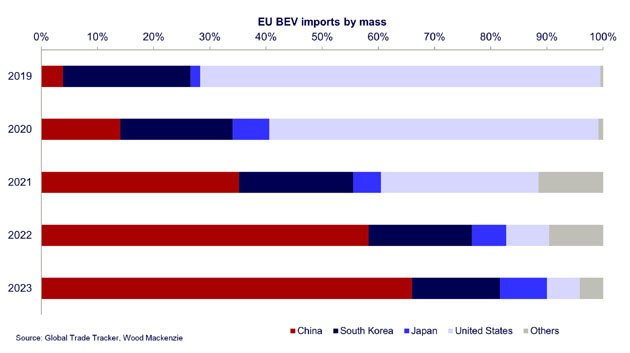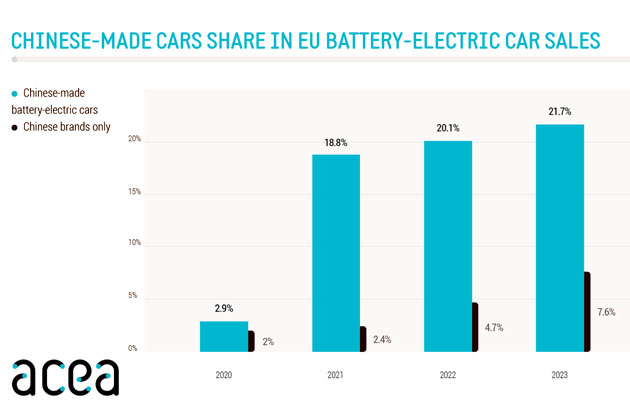Recent Posts
- In Pictures: Food of Atelier Moessmer Norbert Niederkofler in Brunico, Italy
- Aging With Integrity and Grace
- Higher U.S. Interest Rates Drive China Panda Bond Issuance Boom
- Infographic: Where Unemployment Benefits Are the Highest, in OECD Countries
- Xi Jinping’s Russian Lessons
- Humour
- Chart: Podcasts – The New Mass Medium?
- Taiwan War Games to Mimic Combat As Closely As Possible
- Infographic: Top 20 Countries by Plastic Waste per Capita
- China Plans New Measures to Attract Venture Capital Investment
- Humour: News in Cartoon
- Chart: Global Nuclear Weapon Spending on the Rise
- Indonesia and China Agree On Making Indonesia an EV Export Production Hub
- Infographic: Global Populations in Perspective
- Plane Hygiene: Staying Healthy at 35,000 Feet
- Chart: Travel and Tourism Drive Close to 10% of the US Economy
- In Pictures: 1933 Lincoln Model KB Coupe by Judkins
- Chart: China’s Auto Exports Surge
- Charts: China Credit Gets a Lift From Bond Sales as Loan Growth Slows in May
- Chart: Holidays in May Boost China’s Retail Sales But Factory Output Lags
- Chuckles of the Day
- Mapped: The World’s Most Competitive Economies
- Immune Response Study Explains Why Some People Don’t Get COVID-19
- Charts: NVDA Becomes World’s Largest Company… Ever
- China Home-Price Slump Accelerates in May Despite More Stimulus
- Music Video: He Don’t Love You (Like I Love You)
- Charts: Global Housing Affordability
- China to Reach 2030 Solar and Wind Energy Target Five Years Ahead of Schedule
- In Pictures: Storm Pilot Photographer Captures Breathtaking Images From 40,000 Feet
- Some People Are Strangely Resistant to Alzheimer’s. Here’s What Makes Them Different.
- Humour: News in Cartoon
- Mapped: The World’s Oldest and Youngest Countries, by Median Age
- A Good Knife Is Not Only About the Steel
- Charts: Quality of Life Index by Countries 2024
- Could a Blood Test Predict Parkinson’s Years Before Symptoms?
- In Pictures: Food of JAAN By Kirk Westaway in Singapore
- Chart: The U.S. Drops Out of Global Competitiveness Top 10
- Why Higher Tariffs on Chinese EVs Are a Double-edged Sword
- South Africa’s Biggest Hydrogen Project Woos Japanese Investors
- Inherited Alzheimer’s: Whether It’s From Mom or Dad Could Matter
Archives
- June 2024
- May 2024
- April 2024
- March 2024
- February 2024
- January 2024
- December 2023
- November 2023
- October 2023
- September 2023
- August 2023
- July 2023
- June 2023
- May 2023
- April 2023
- March 2023
- February 2023
- January 2023
- December 2022
- November 2022
- October 2022
- September 2022
- August 2022
- July 2022
- June 2022
- May 2022
- April 2022
- March 2022
- February 2022
- January 2022
- December 2021
- November 2021
- October 2021
- September 2021
- August 2021
- July 2021
- June 2021
- May 2021
- April 2021
- March 2021
- February 2021
- January 2021
- December 2020
- November 2020
- October 2020
- September 2020
- August 2020
- July 2020
- June 2020
- May 2020
- April 2020
- March 2020
- August 2017
- June 2017
- May 2017
- March 2017
- February 2017
- January 2017
- December 2016
- November 2016
- October 2016
- September 2016
- August 2016
- July 2016
- June 2016
- May 2016
- April 2016
- March 2016
- February 2016
- January 2016
- December 2015
- November 2015
- October 2015
- August 2015
- July 2015
- June 2015
- May 2015
- April 2015
- March 2015
- February 2015
- January 2015
- December 2014
- November 2014
- October 2014
- September 2014
- August 2014
- July 2014
- May 2014
- April 2014
- March 2014
- February 2014
- January 2014
- December 2013
- November 2013
- October 2013
- September 2013
- August 2013
- July 2013
- June 2013
- May 2013
- April 2013
- March 2013
- February 2013
- January 2013
- December 2012
- November 2012
- October 2012
- September 2012
- August 2012
- July 2012
- June 2012
- May 2012
- April 2012
- March 2012
- February 2012
- January 2012
- December 2011
Categories
- Aging
- Analysis
- Art
- Banking
- Bond
- Business
- Classic Car
- Climate
- Commercial Real Estate
- Commodity
- Construction
- Consumption
- Culture
- Currency
- Debt
- Demographic
- Economy
- Education
- Employment
- Energy
- Engineering
- Entertainment
- Environment
- Exercise
- Explainer
- Finance
- Food
- Gold
- Gold Stock
- Health
- History
- Housing
- Humour
- In Pictures
- Infographic
- Information
- Interview
- Investment
- Life
- Links
- Manufacturing
- Medicine
- Michelin Restaurant
- Military
- Monetary
- Money
- Music
- News
- Opinion
- Person
- Personal Wealth
- Policy
- Politics
- Real Estate
- Report
- Research
- Restaurant
- Science
- Services
- Society
- Sport
- Stock
- Stock Market
- Story
- Study
- Technology
- Tourism
- Trade
- Trading
- Transportation
- Travel
- Uncategorized
- Video
- Wealth
AI
Alzheimer's
Asia
Australia
Battery
Bitcoin
Brain
Canada
Car
Car Sales
Central Bank
China
Cities
Coal
Copper
Countries
COVID-19
COVID-19 Vaccination
COVID-19 Variant
CPI
Crude Oil
Debt
Dementia
Democracy
Electric Cars
Electricity
Electric Vehicles
EU
Europe
Eurozone
EV
Exercise
Federal Reserve
G7
Gasoline
GDP
Germany
Global
Happiness
Heart Health
Hong Kong
India
Inflation
Interest Rate
Internet
Israel
Japan
Lithium
Media
Military
Mortgage
OECD
Oil
Pandemic
PMI
Recession
Retail Sales
Robotic
Russia
S&P 500
Semiconductor
Singapore
Sleep
Smartphone
Social Media
Solar
Taiwan
UK
Ukraine War
US
USD
US Treasuries
Vaccine
World
Yuan

